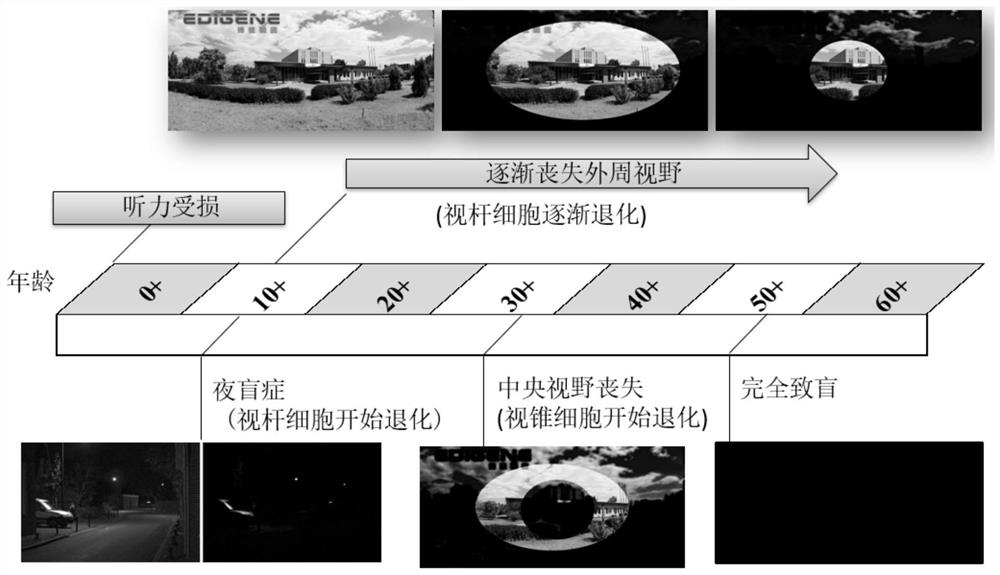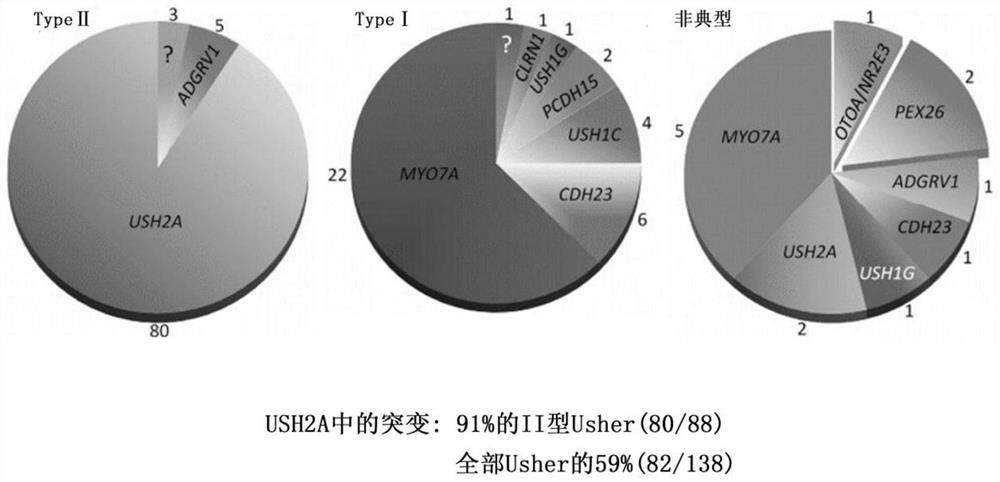Method for treating Usher syndrome and composition thereof
A syndrome and target technology, applied in gene therapy, drug combination, botanical equipment and methods, etc., can solve the problems of oligonucleotide toxicity or immunogenicity, carcinogenesis, refractory USHER syndrome type II, etc.
- Summary
- Abstract
- Description
- Claims
- Application Information
AI Technical Summary
Problems solved by technology
Method used
Image
Examples
Embodiment 1
[0114] Example 1: Construction of the reporting system
[0115] This application mainly studies the repair of NM_206933.2(USH2A)_c.11864G>A(p.Trp3955Ter) mutation site by LEAPER technology. Therefore, there is a need for a simple and usable reporter system that can reflect the editing efficiency of the site. The mutation from the original TGG codon to the TAG codon due to the pathogenic mutation site NM_206933.2(USH2A)_c.11864G>A(p.Trp3955Ter) of the USH2A gene is a nonsense mutation. When the mutated mRNA sequence is translated, It will stop at the newly formed TAG stop codon, resulting in the inability of the subsequent sequence to be translated into protein. Utilizing the above characteristics, this application designs such as Figure 4 The reporting system shown. The reporter system uses a lentiviral vector driven by a CMV promoter such as Figure 4 mRNAs indicated. This section of mRNA mainly includes the following parts: 1) mCherry red fluorescent protein sequence, ...
Embodiment 2
[0119] Example 2: arRNA optimization for pathogenic mutation sites
[0120] Since the LEAPER technology does not need to introduce any foreign protein into the cells, in this example, when testing the editing of the disease-causing site by LEAPER, it is only necessary to introduce arRNA into the reporter system cells. The arRNA in this example was synthesized in vitro, and its sequence is shown in Table 1 below. Sequences are named in two ways, where "name" is named according to the length or truncated length of the sequence, and "unified name" is named by X-C-Y, where X represents the length of the 5' end, Y represents the length of the 3' end, and C is the target To base C. For example, if 111nt is named 55-C-55, it means that its 5' and 3' lengths are both 55nt.
[0121] Table 1. Summary of arRNA sequences used in Example 2
[0122]
[0123]
[0124]
[0125] Note: The uppercase letters in the RNA sequence are only used to distinguish the target bases, and the u...
Embodiment 3
[0153] Example 3: In vivo editing of the mouse eye Ush2A gene locus
[0154] In Example 2, the USH2A pathogenic site was edited through an in vitro test. Although in vitro experiments can achieve good editing efficiency, the environment of in vitro cell culture cannot simulate many factors such as human internal circulation, immune system and intraocular injection, which still need more in vivo experiments to verify. Considering the connection between follow-up and actual treatment, and the current small RNA delivery in the eye, Adeno-Associated Virus (Adeno-Associated Virus, AAV) is usually used, and we finally chose to use AAV vector as the delivery method of arRNA in the mouse eye. In vivo editing of the Ush2A locus. We used 151nt arRNA (SEQ ID NO: 32) for this experiment. That is, the test arRNA used in this example contains the target base C that is para-positioned with the target A. When the arRNA hybridizes with the target RNA, an A-C mismatch (mismatch) can be formed...
PUM
 Login to View More
Login to View More Abstract
Description
Claims
Application Information
 Login to View More
Login to View More - R&D
- Intellectual Property
- Life Sciences
- Materials
- Tech Scout
- Unparalleled Data Quality
- Higher Quality Content
- 60% Fewer Hallucinations
Browse by: Latest US Patents, China's latest patents, Technical Efficacy Thesaurus, Application Domain, Technology Topic, Popular Technical Reports.
© 2025 PatSnap. All rights reserved.Legal|Privacy policy|Modern Slavery Act Transparency Statement|Sitemap|About US| Contact US: help@patsnap.com



